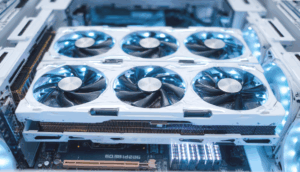High-performance computing (HPC) environments demand robust and reliable infrastructure. While processors, memory, and interconnects often steal the spotlight, the unsung heroes powering these complex systems are industrial and medical-grade data communication cables. These cables are specifically engineered to withstand the demanding conditions often found in HPC facilities, ensuring uninterrupted data transfer and operational stability. Unlike consumer-grade cables, industrial and medical cables are designed to resist electromagnetic interference (EMI), radio frequency interference (RFI), and extreme temperatures, all of which are common in HPC settings.
The use of industrial data communication cables in HPC is crucial for several reasons. First, data integrity is paramount. HPC applications often involve processing massive datasets, and even minor data corruption can lead to significant errors and inaccurate results. Industrial cables, with their superior shielding and robust construction, minimize the risk of data loss or alteration. Second, HPC systems require high bandwidth to handle the massive data streams involved in simulations, modeling, and analysis. Industrial cables, particularly those utilizing fiber optic or advanced copper technologies, offer the necessary bandwidth to support these demanding applications. Third, the longevity and reliability of HPC infrastructure are critical. Downtime can be incredibly costly, both in terms of lost productivity and potential financial losses. Industrial cables are built to last, withstanding harsh environmental conditions and frequent use, minimizing the risk of cable failure and system downtime. Furthermore, the stringent quality control processes involved in the manufacturing of these cables ensure consistent performance and adherence to industry standards.
Medical-grade cables, while traditionally associated with healthcare applications, also play an increasingly important role in certain HPC scenarios. Medical-grade cables are designed to meet strict safety and hygiene requirements, making them suitable for use in HPC environments where cleanliness and safety are paramount. This is particularly relevant in research facilities where HPC systems are used to analyze sensitive patient data or control medical equipment. These cables often feature biocompatible materials and are resistant to harsh cleaning agents, minimizing the risk of contamination and ensuring patient safety. The robust construction of medical-grade cables also makes them well-suited for demanding HPC applications that require high reliability and performance.

The selection of the appropriate industrial or medical data communication cable for an HPC application is a critical decision. Factors to consider include the specific bandwidth requirements, the operating environment, the level of EMI/RFI interference, and any relevant safety or hygiene standards. Fiber optic cables are often preferred for high-bandwidth applications and long distances, while copper cables may be more suitable for shorter distances and cost-sensitive applications. It’s also important to choose cables that are compatible with the existing HPC infrastructure and that meet the necessary industry certifications. Careful consideration should also be given to the cable’s shielding effectiveness, temperature rating, and resistance to chemicals and abrasion.
In conclusion, industrial and medical data communication cables are essential components of modern HPC infrastructure. Their robust construction, high bandwidth capabilities, and resistance to environmental factors ensure reliable data transfer and operational stability. By carefully selecting the appropriate cables for each specific application, HPC professionals can maximize the performance and longevity of their systems, ensuring accurate results and minimizing the risk of costly downtime. The continued advancement in cable technology will further enhance the capabilities of HPC systems, enabling researchers and engineers to tackle even more complex challenges in the future.